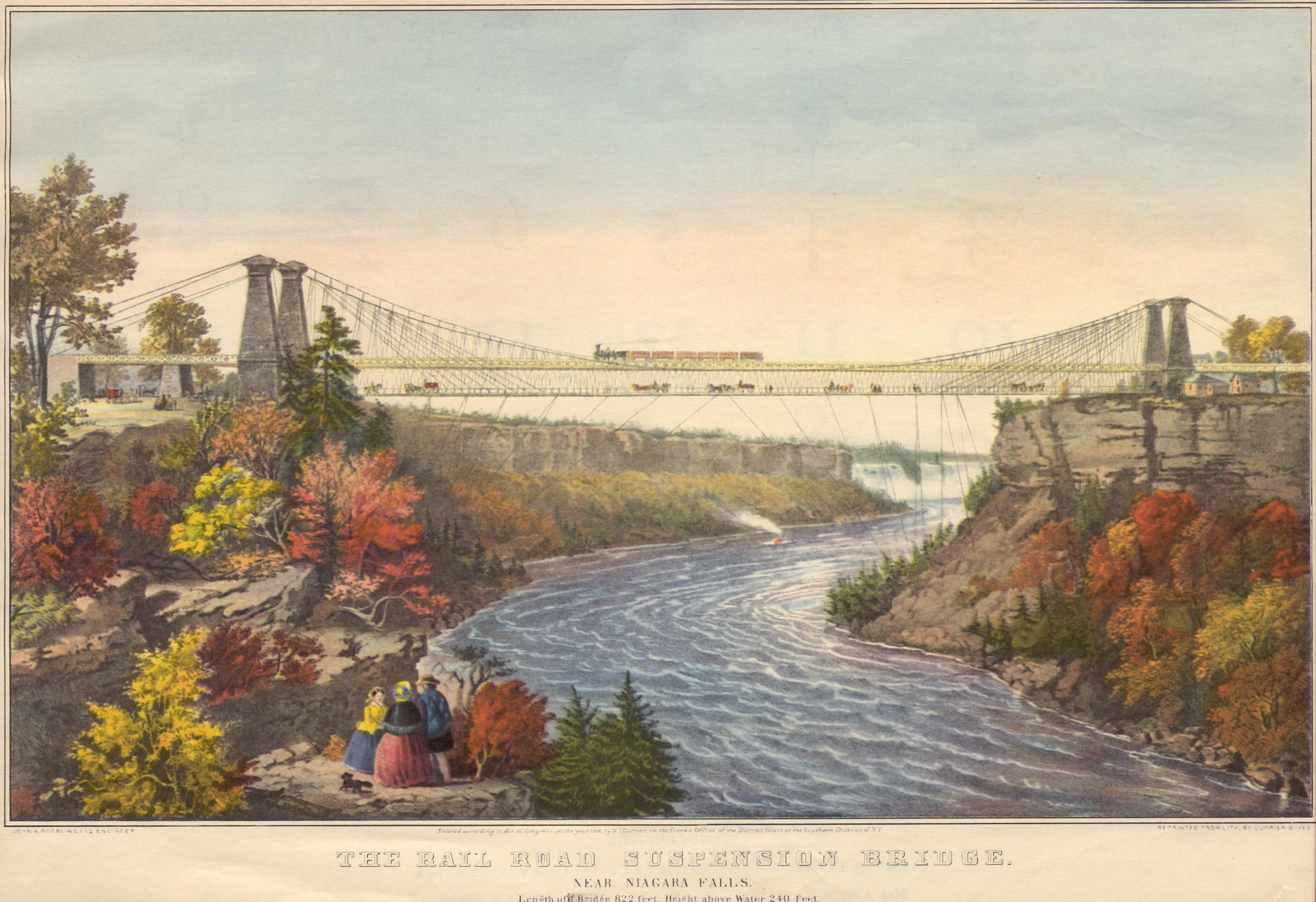A Bridge Too Far

It was the mid-1800s. A Canadian politician named William Hamilton Merritt wanted to increase trade with the United States, which was a willing partner to those endeavors. And he had an idea — a train bridge, passing over Niagara Falls, connecting the two nations. Specifically, he wanted to build a suspension bridge over the span. (Here’s how suspension bridges work.) While most experts (especially in North America) thought that a suspension bridge is unsuitable for trains, the leading proponent of these types of works, a civil engineer named Charles Ellet, Jr., disagreed. He believed that he could build a suspension bridge which could cross the 800’-long gap — and agreed to lead the project.
With the help of a teenage kid with a pretty simple hobby, that is.
Suspension bridges work by suspending (hence the name) a platform from tension-bearing cables which span the gap. To start the construction of a suspension bridge, one needs to run a rope or wire across the expanse. If you were trying to build a suspension bridge in modern times, that’d be done by a helicopter, crane, or similar solution — but again, this was the mid-1800s. None of those solutions existed. How could Merritt and Ellet get that first line across Niagara Falls?
Ellet’s initial ideas were pretty unrealistic. In most cases, he’d just ferry a wire across, but, as the Nebraska State Historical Society notes, that wasn’t going to work — the 225’ cliff walls made that difficult, and the rapids below made that avenue almost impossible. Ellet considered connecting a cable to a cannonball and firing it across the gorge, but that seemed impractical; he similarly thought about rocketry but dismisses that option as well. (It’s unreported if he ever considered using a ballista, which would have probably worked, but it was the mid-1800s, and was unlikely anyone has any Roman-era siege weapons laying around.)
So Ellet came up with another idea: a contest. Taking inspiration from Ben Franklin, Ellet decided to invite local children to fly kites across the river. The first one to successfully traverse the gorge would get $5, which doesn’t sound like a lot, but accounting for inflation, it’s about $150.
Enter Homan Walsh, a 15- or 16-year-old boy. He ferried across to the Canadian side of the Falls and, after a day of waiting for the winds to pick up, he got to flying — and nearly found immediate success, as KiteHistory.com recounts:
Homan’s kite flew all day and into the night [and crossed over the expanse]. At midnight, as he had expected, the wind died and the kite began to descend. Then there was a sudden pull of the line, and it went limp. He realized what happened. Homan’s kite string had broken. It was cut on the edge of the sharp rocks and broken ice.
But he didn’t give up, in part because he was stranded — ferry service was suspended due to icy conditions in the river. Eight days after his first failed attempt, Honan’s kite crossed the gorge, this time safely. And with it, the first wire of the suspension bridge made its way from Canada to the United States. Ellet’s plan paid off: Walsh collected his cash prize, and Ellet began building the bridge.
The Niagara Falls Suspension Bridge, as it would become known, opened for service in 1848, inviting horse-drawn carriages over it. It expanded to accommodate trains in 1855, as Merritt intended. It served that purpose successfully for forty years. It doesn’t exist today, though. Before the century was out, trains became too heavy for the bridge; it was replaced by the Whirlpool Rapids Bridge in 1897.
Bonus Fact: If you want to replicate Ben Franklin’s kite flying experiment, don’t do so in St. Louis — it is illegal to do so there. A city ordinance states that “no person, firm or corporation shall own, possess, use, distribute or sell any kite, appendage thereto or string attached to said kite or appendage either or all of which can conduct electrical current.” (In fact, don’t replicate the experiment anywhere — it’s pretty dangerous to intentionally redirect lightning toward yourself.)
From the Archives: Turning Off Niagara Falls: It doesn’t have an off switch, but in this case, some engineers wished it did. So they made one.
Take the Quiz: Fill in the Blanks, bridge edition. (Sorry for the spacing on this one — I’m not sure how to fix it. The quiz is playable, though.)
Related: “The Kite that Bridged Two Nations: Homan Walsh and the First Niagara Suspension Bridge” by Alexis O’Neill and Terry Widener. A children’s book about Homan’s kite flying success. Ten reviews, all of five stars.
